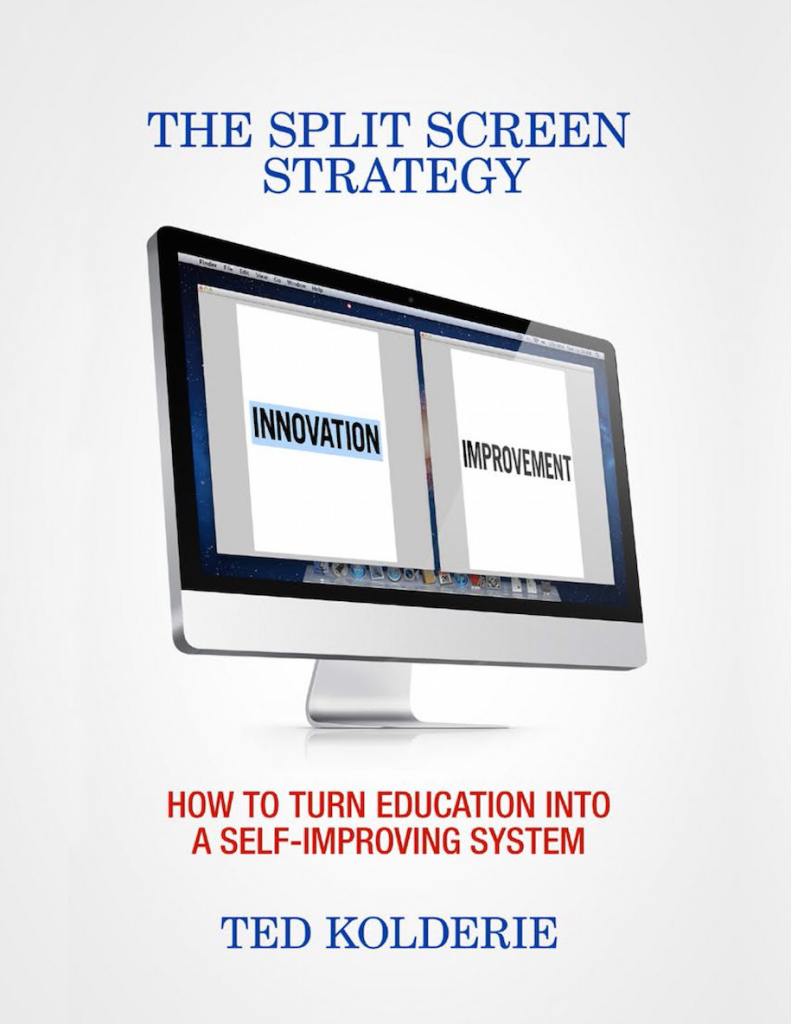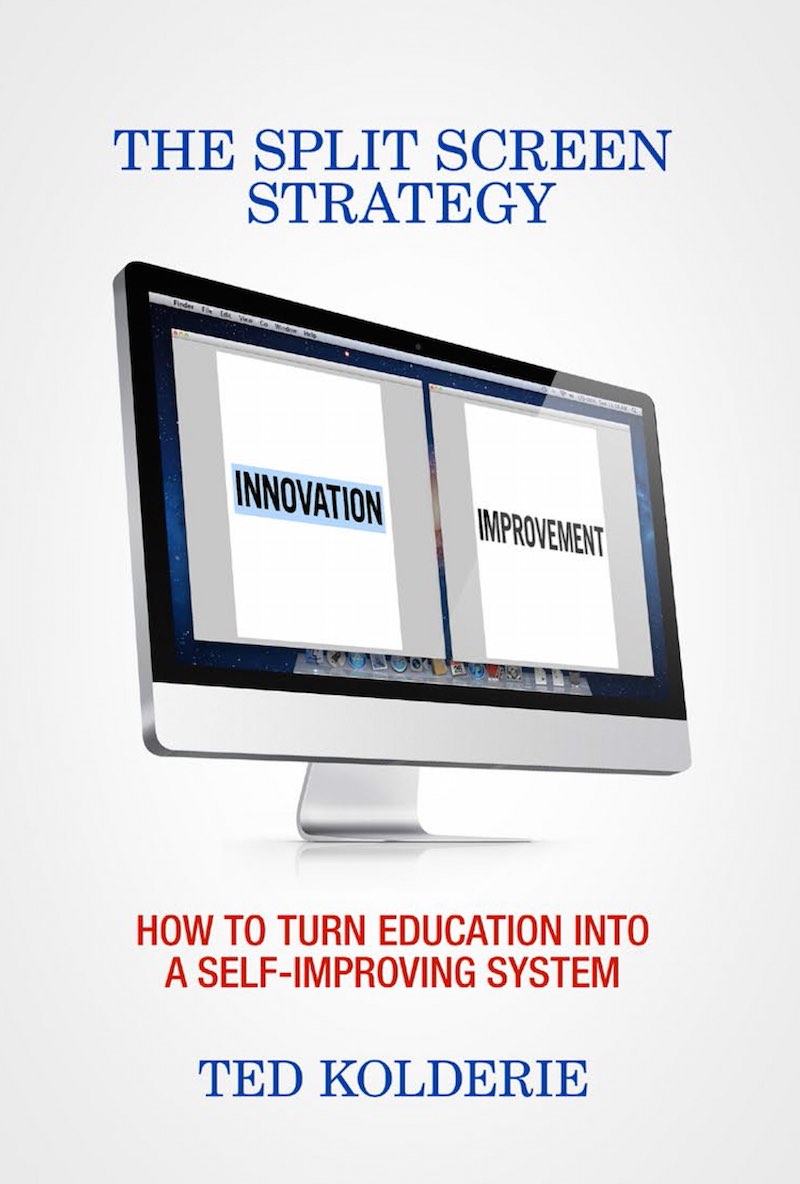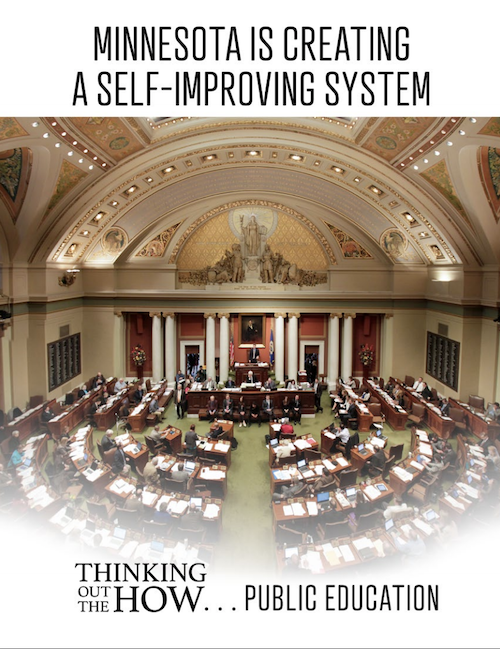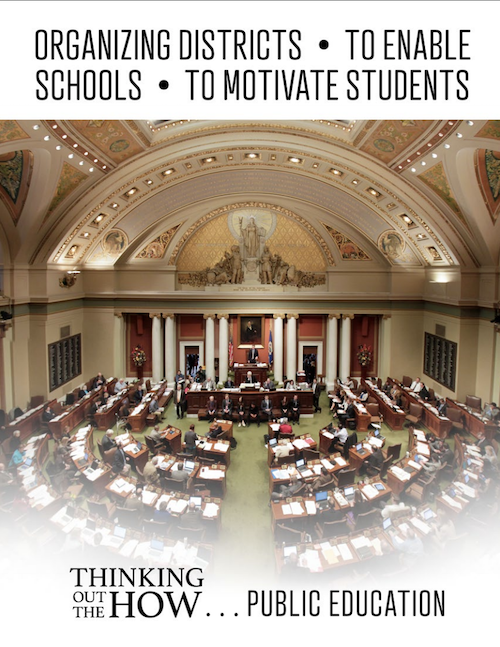
Book • September 2015 • By Ted Kolderie

Get Book as PDF • Hard Copies & Kindle Version on Amazon
In his new book, Ted Kolderie challenges the idea that lies at the heart of the conventional theory about how to reach this country’s education goals.
For three decades now, the theory has been to take it as given that the only course is to accept the system as it stands and to push its schools and teachers to deliver ‘better performance’.
Perhaps not surprisingly, that effort to get an inert system to do-better has not proved an outstanding success. The ‘theory of action’ should instead be to turn public education into a self-improving system so that, like so many of our systems, it will become a successful system.
That can be done. It means marrying to the current strategy of ‘standards-based systemic reform’ a new strategy of ‘innovation-based systemic reform’. Running innovation and improvement together is ‘the split-screen strategy’.
Explaining, Ted says:
Successful systems, self-improving systems, are open to innovation. The strategy for public education will have states and districts creating a climate of encouragement for schools and their teachers to step outside the traditional givens; to try new forms of school, new concepts of achievement and new approaches to learning.
It is a mistake to go on assuming public education can be better without school having to be significantly different. Think about the other systems all of us interact with every day: It is the appearance of the ‘different’ that drives improvement.
And it is possible to make public education different. No one is going to ‘blow up the system and start over’. But education can open to the new-and-different in much the way our successful systems do.
The book explains what boards of education and state legislatures and governors can do to set that process in motion.
What it takes is for educators – for all those in the education policy discussion – to rethink the notion that change is ‘something the boss does’ . . . to look increasingly to schools and teachers for ways to improve learning. They should consider how differently teachers would behave if they had truly professional roles . . . how much better students would learn if school were organized to maximize motivation.
The book sets out a dramatically different role for the national government; suggesting among other things how much more effective it would be for presidents to make their proposals not to Congress but to the state legislatures in whose law the education system exists.
It sets out a new role for teacher unions; suggesting that teachers, as they are asked to ‘be accountable’ for student and school success, insist on getting the authority to control what matters for student and school success.
This is a challenging but a hopeful book, Ted says. This country could be getting a lot more than it is from both its students and their teachers. Just not with the current, conventional, theory of action.
Turning education into a self-improving system, by marrying innovation and improvement, must be the new ‘theory of action’. Innovation, gradually spreading and steadily improving, is systemic change.
ooo
The Split-Screen Strategy is available as a free PDF and as an e-book on Amazon Kindle, Apple iBooks and Barnes and Noble Nook. Hard copies are available on Amazon.

